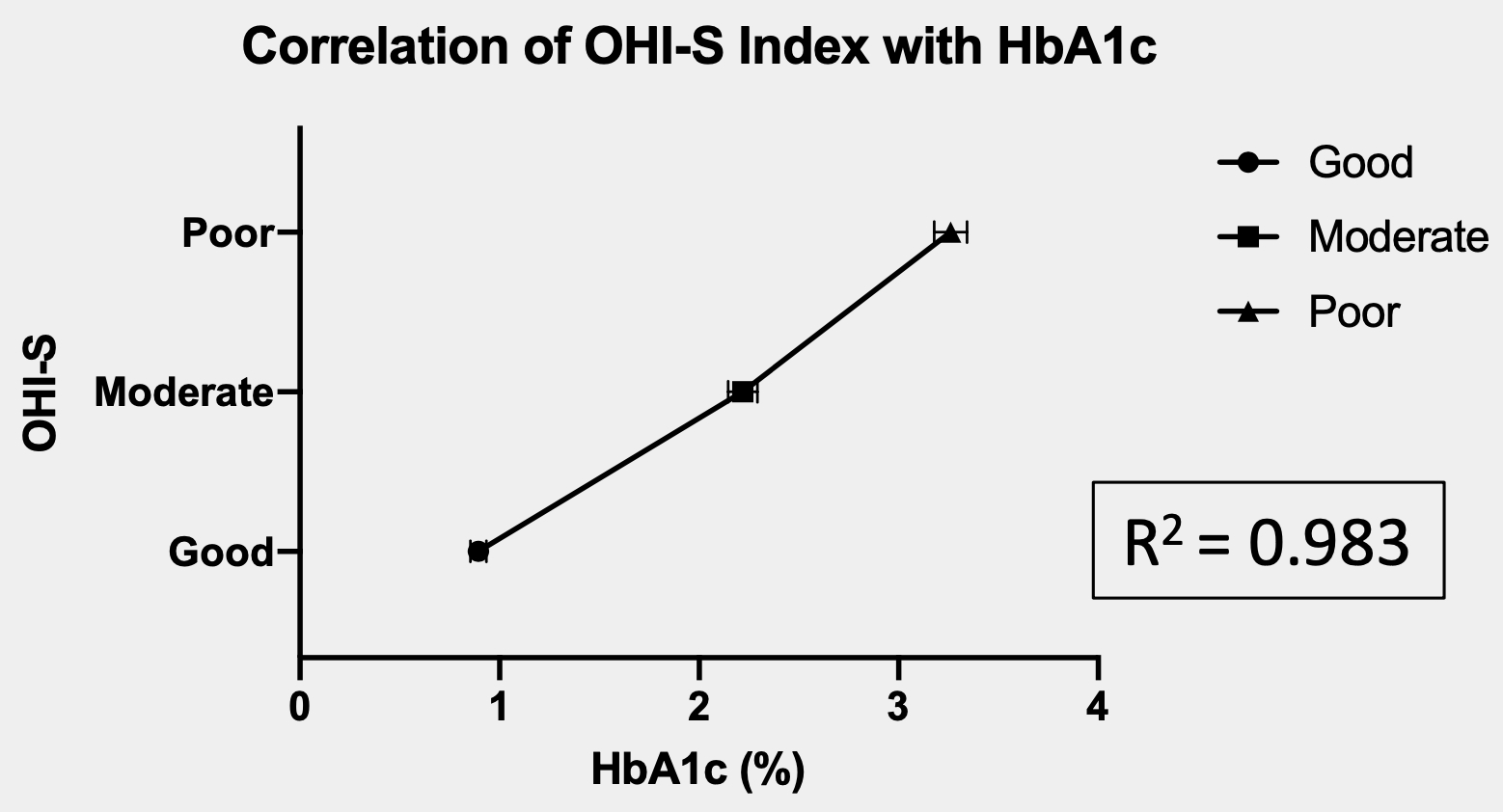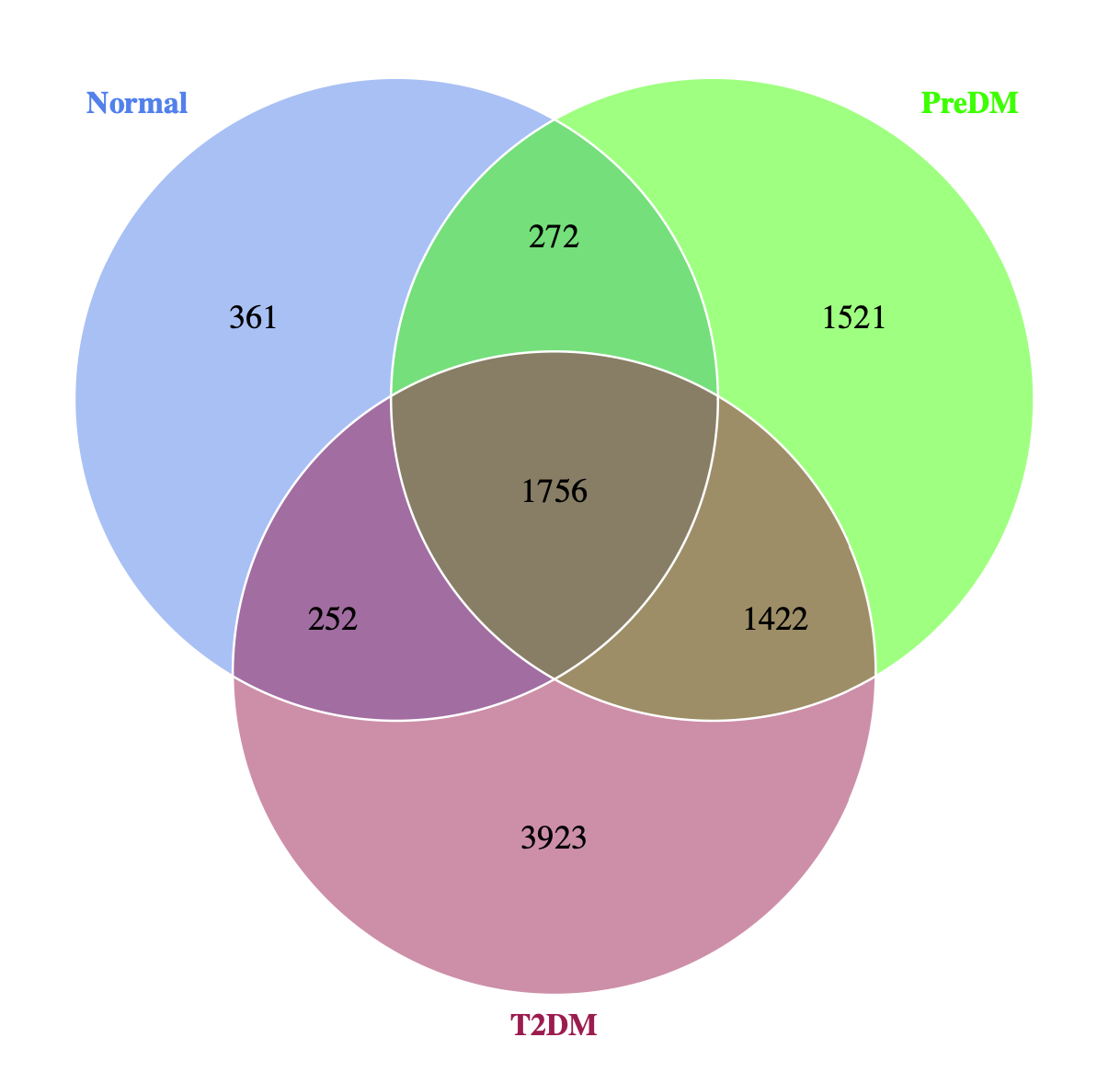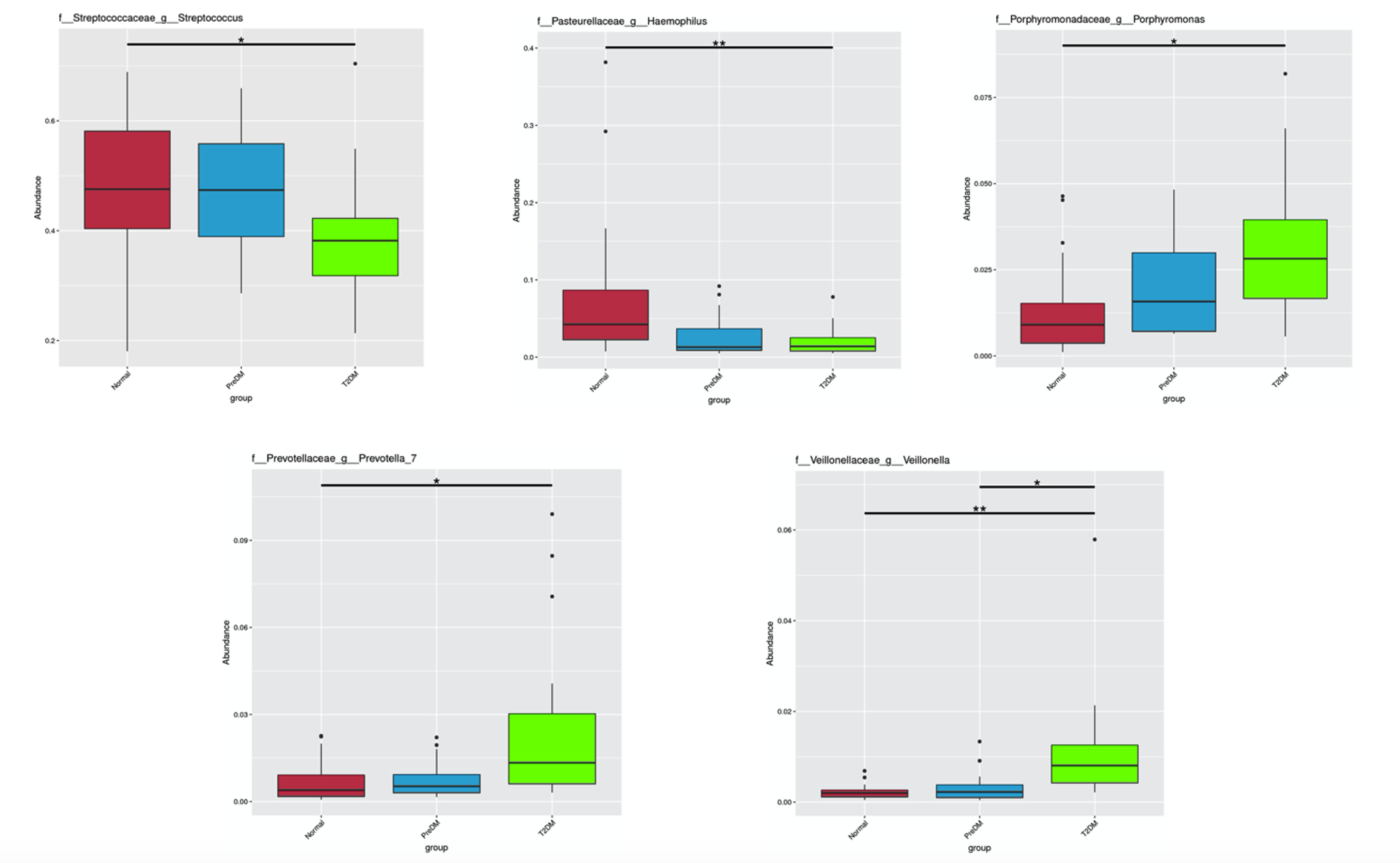IADR Abstract Archives
Oral-Genera Shifted Abundance in Indonesian Type-2 Diabetic Patients’ Salivary Bacteriome
Objectives: Type-2 Diabetes Mellitus (T2DM) is a public health burden worldwide. The correlation between several oral bacteria abundance and hemoglobin A1c (HbA1c) levels was shown in previous studies. Therefore, in this study, we aim to analyze the abundance of several oral-genera in T2DM patients’ salivary bacteriome based on metagenomic analysis. This is the first study related to salivary bacteriome in different glycaemic statuses of Indonesian adults.
Methods: Sixty three participants (male=13, female=50) were classified into normoglycemic (HbA1c ≤ 5.7%, n=24), prediabetic (5.7% < HbA1c < 6.5%, n=16), and T2DM (HbA1c ≥ 6.5%, n=23) groups. Subsequently, participants were evaluated by the simplified oral hygiene index (OHI-S) and classified into good oral hygiene (0-1.2), moderate oral hygiene (1.3-3.0), and poor oral hygiene (3.1-6.0). Salivary samples were then collected for bacterial DNA extraction and isolation. Amplicon library was then generated by using 16S rRNA V3-V4 qPCR. Furthermore, bioinformatics and statistical analysis were performed.
Results: OHI-S scores were statistically significant higher in T2DM group than normoglycemic group (P < 0.005) with a strong positive correlation (R2 = 0.983) (Fig1). The number of identified species was 2641 in normoglycemic group; 4971 in prediabetic group; and 7353 in diabetic group, indicating higher biodiversity as HbA1c levels increased (Fig2). At genus level, 5 genera shown a strong shift of abundance in those 3 groups. Genus Streptococcus and Genus Haemophylus shown a decreased abundance while Genus Porphyromonas, Genus Prevotella, and Genus Veillonella shown an increased abundance as in groups with higher HbA1c levels (Fig3a-3e).
Conclusions: This study highlighted the unique oral bacteriome profile shifted in T2DM patients, giving it a promising prospect as a non-invasive bioindicator. In addition, further studies are needed to confirm these findings through pathogenomics studies, i.e., one focusing on pathogenicity and virulence of determinant factors.
Methods: Sixty three participants (male=13, female=50) were classified into normoglycemic (HbA1c ≤ 5.7%, n=24), prediabetic (5.7% < HbA1c < 6.5%, n=16), and T2DM (HbA1c ≥ 6.5%, n=23) groups. Subsequently, participants were evaluated by the simplified oral hygiene index (OHI-S) and classified into good oral hygiene (0-1.2), moderate oral hygiene (1.3-3.0), and poor oral hygiene (3.1-6.0). Salivary samples were then collected for bacterial DNA extraction and isolation. Amplicon library was then generated by using 16S rRNA V3-V4 qPCR. Furthermore, bioinformatics and statistical analysis were performed.
Results: OHI-S scores were statistically significant higher in T2DM group than normoglycemic group (P < 0.005) with a strong positive correlation (R2 = 0.983) (Fig1). The number of identified species was 2641 in normoglycemic group; 4971 in prediabetic group; and 7353 in diabetic group, indicating higher biodiversity as HbA1c levels increased (Fig2). At genus level, 5 genera shown a strong shift of abundance in those 3 groups. Genus Streptococcus and Genus Haemophylus shown a decreased abundance while Genus Porphyromonas, Genus Prevotella, and Genus Veillonella shown an increased abundance as in groups with higher HbA1c levels (Fig3a-3e).
Conclusions: This study highlighted the unique oral bacteriome profile shifted in T2DM patients, giving it a promising prospect as a non-invasive bioindicator. In addition, further studies are needed to confirm these findings through pathogenomics studies, i.e., one focusing on pathogenicity and virulence of determinant factors.



